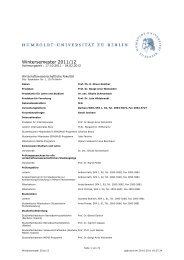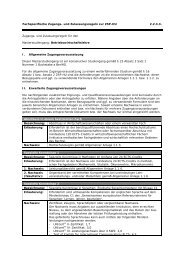Measuring the Effects of a Shock to Monetary Policy - Humboldt ...
Measuring the Effects of a Shock to Monetary Policy - Humboldt ...
Measuring the Effects of a Shock to Monetary Policy - Humboldt ...
Create successful ePaper yourself
Turn your PDF publications into a flip-book with our unique Google optimized e-Paper software.
16 Bayesian FAVARs with Agnostic Identification<br />
4 The Econometric Framework<br />
4.1 FAVARs<br />
As already stated, <strong>the</strong> idea behind <strong>the</strong> FAVARs is <strong>to</strong> combine <strong>the</strong> standard structural<br />
VAR analysis with <strong>the</strong> recent developed and advanced features <strong>of</strong> dynamic fac<strong>to</strong>r models<br />
estimating a joint VAR that contains fac<strong>to</strong>rs extracted from large panel <strong>of</strong> informational<br />
data and in addition perfectly observable time series that have pervasive effects on <strong>the</strong><br />
economy such as <strong>the</strong> short-term interest rate set by <strong>the</strong> central. Therefore BBE labeled<br />
<strong>the</strong> model in a straight forward manner ”fac<strong>to</strong>r-augmented VAR”. This approach is well<br />
suited for structural analysis such as impulse response analysis and variance decomposi-<br />
tion (in particular for <strong>the</strong> problem at hand). For <strong>the</strong> estimation procedure <strong>the</strong> model has<br />
<strong>to</strong> be cast in<strong>to</strong> a state-space representation. For <strong>the</strong> rest <strong>of</strong> <strong>the</strong> <strong>the</strong>sis I will mostly follow<br />
<strong>the</strong> approach and notation <strong>of</strong> BBE o<strong>the</strong>rwise explicitly stated.<br />
The model consists <strong>of</strong> <strong>the</strong> two equations (1) and (2) introduced in <strong>the</strong> previous section.<br />
The FAVAR equation (2) already has <strong>the</strong> form <strong>to</strong> build <strong>the</strong> state equation <strong>to</strong> which one<br />
also refers <strong>of</strong>ten <strong>to</strong> as <strong>the</strong> transition equation. Equation (2) represents <strong>the</strong> joint dynamics<br />
<strong>of</strong> fac<strong>to</strong>rs and <strong>the</strong> observable pervasive variables (Ft, Yt).<br />
⎡<br />
⎢<br />
⎣ Ft<br />
Yt<br />
⎤<br />
⎡<br />
⎥ ⎢<br />
⎦ = Φ(L) ⎣ Ft−1<br />
Yt−1<br />
⎤<br />
⎥<br />
⎦ + vt<br />
(3)<br />
vt ∼ N(0, Q) (4)<br />
Here <strong>the</strong> variable Yt denotes <strong>the</strong> [M × 1] vec<strong>to</strong>r <strong>of</strong> observable economic variables<br />
that having pervasive effects throughout <strong>the</strong> economy. The index t = 1, ..., T represents<br />
<strong>the</strong> time <strong>the</strong> term Φ(L) represents a conformable lag polynomial <strong>of</strong> order d. In our<br />
specification that follows BBE Yt is assumed <strong>to</strong> represent <strong>the</strong> policy instrument,e.g. <strong>the</strong>




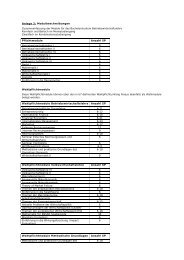

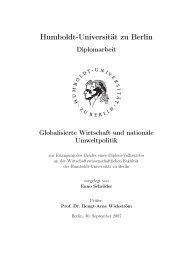
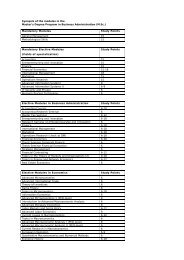
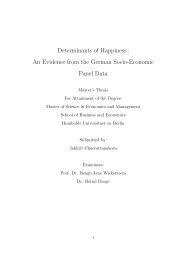
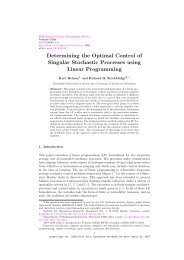
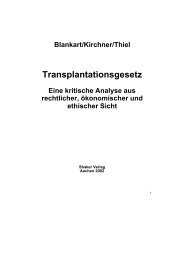


![[Text eingeben] [Text eingeben] Lebenslauf Anna-Maria Schneider](https://img.yumpu.com/16300391/1/184x260/text-eingeben-text-eingeben-lebenslauf-anna-maria-schneider.jpg?quality=85)

